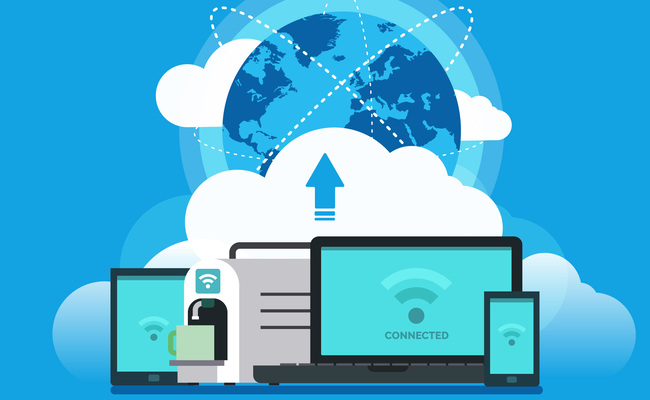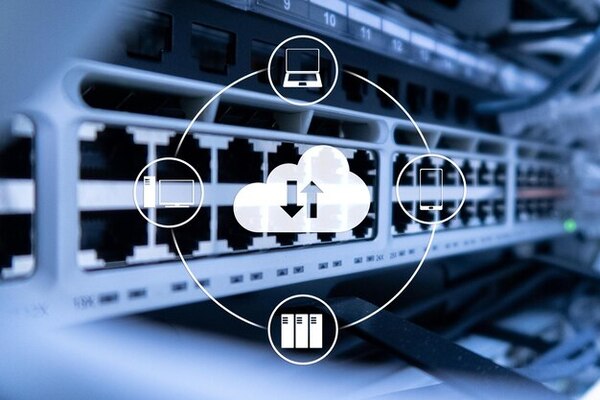Configuring your CDN smartly can help reduce overall cloud expenses significantly. While the primary goal of CDNs has always been to enhance user experience through improved performance, availability, and scalability, these benefits often come with added infrastructure costs. However, by optimizing CDN configurations, businesses can manage these costs effectively.
Years ago, CDNs started providing value-added services that helped customers boost performance and coverage without excessive spending. Today, strategic use of these services can help businesses cut a substantial portion of their cloud-related costs, ensuring better performance and savings.

Understanding Cloud and CDN Cost Factors
Before we can effectively reduce costs, it’s crucial to understand their structure. Cloud-based web delivery expenses are typically divided into two main categories: costs related to the Content Delivery Network (CDN) and costs associated with cloud services.
CDN costs cover the distribution of content closer to users, ensuring faster and more reliable access, while cloud costs are tied to storage, computing, and data transfer within the cloud environment. Understanding how these components contribute to your overall expenses is the first step toward optimizing your cloud strategy.
Understanding CDN Costs
CDN expenses are typically calculated based on the amount of outgoing data delivered, measured in GBs, TBs, or even PBs per month. The rates vary depending on factors like the product level, geographical coverage, and features such as static object caching versus dynamic traffic acceleration, and HTTPS support.
Key considerations include:
- Traffic Volume: Higher data delivery results in increased costs.
- Feature Set: Enhanced capabilities like dynamic acceleration and security features can add to the expense.
- Geographic Reach: Costs may differ based on the regions covered by the CDN.
By understanding these elements, businesses can better manage their CDN-related costs and choose the most cost-effective configurations for their needs.
Breaking Down Cloud Costs
Cloud costs can seem complicated, but we’ll simplify it. They are generally categorized into storage, computing, and data transfer expenses. Each component has its own billing model and pricing structure, making it essential to understand how they work together.
Cloud Storage
Cloud storage costs are typically based on several factors, including the amount of data stored, the number of requests made, and the data retrieved from the storage.
Key points to consider:
- Storage Volume: Charges increase with the amount of data stored.
- Request Frequency: Higher numbers of data access requests can lead to additional costs.
- Data Retrieval: Fees apply for data pulled from cloud storage to other locations.
Businesses should monitor these factors closely to optimize storage costs effectively.
Cloud Computing
Cloud computing costs vary depending on the billing model used, such as reserved instances, on-demand, or spot instances. The choice of model will determine how you are billed, whether by the second, minute, or hour.
Key points include:
- Billing Models: Choose between options like on-demand, reserved, or spot instances based on your needs.
- Time-Based Charges: Pay for compute power based on usage time, such as seconds, minutes, or hours.
- Service Types: Different instance types will have varying costs.
Selecting the right compute model can significantly impact overall cloud expenses.
Cloud Networking & Data Transfer
When data leaves the cloud provider’s network or moves between different regions, it incurs costs. These rates vary based on the service type and the volume of data transferred.
Key considerations are:
- Data Egress: Fees for data moving out of the cloud provider’s network.
- Inter-Region Transfer: Charges apply for data traveling between regions.
- Service Origin: Costs depend on the service the data is associated with.
Monitoring and managing data transfer is crucial for controlling cloud costs.
Calculating Overall Cloud Costs
To get a comprehensive view, you need to combine CDN costs with cloud costs, including storage, computing, and data transfer. Here’s a simplified formula:
Overall Cost = CDN Cost + Cloud Costs (Storage + Computing + Data Transfer) h4Using advanced configuration techniques, businesses can optimize these costs. By tackling complex pricing structures with strategic solutions, it’s possible to manage cloud expenses effectively and enhance the ROI of cloud investments.

Offload, Network & Compression Optimization Techniques
Using CDN services to cache static content such as images, videos, JavaScript, and CSS files can significantly lighten the load on your origin server, minimizing requests to cloud storage. Typically, initial CDN caching can boost the cache hit rate considerably, depending on content type and popularity. However, you can achieve even better performance with advanced caching techniques.
Introducing a second layer of caching, like tiered distribution or regional edge caches, can further enhance the cache hit ratio, reducing costs associated with cloud storage and data transfer. This method can push the cache efficiency much higher, optimizing resource usage.
For maximum effectiveness, some CDNs provide a third caching layer, which acts as a primary entry point for your content. Although additional caching layers may involve extra expenses, the savings on cloud costs usually outweigh these fees.
Key benefits of additional caching layers include:
- Dedicated Cache Layer: Acts as the primary entry point for content, reducing the frequency of CDN requests to your cloud workload.
- Cost-Effectiveness: Additional caching layers may involve extra costs, but the reduction in cloud storage and data transfer expenses often outweighs these fees.
- Expert Evaluation: A thorough analysis of your web infrastructure can determine whether cache layering is the best solution or if alternative measures are more appropriate for your needs.
Optimizing your CDN strategy can greatly enhance performance while reducing costs, ensuring a more efficient and scalable cloud environment. Implementing these advanced caching techniques can lead to long-term savings and better resource management.

Optimizing Network and Data Transfer Costs
Understanding Dynamic Content and Its Impact on Costs
Dynamic content, unlike static content, cannot be cached and must be fetched from the cloud workload repeatedly. Examples include personalized data like post-login account balances, transactional processes such as checkouts, and unique queries like flight or hotel searches. As a result, the cost-saving potential of using a CDN for dynamic content is generally lower.
- Common Dynamic Content Examples:
- Personalized data (e.g., post-login bank account balance)
- Transactional processes (e.g., online checkout)
- Unique, non-reusable queries (e.g., flight or hotel searches)
These elements require frequent direct cloud access, leading to increased costs as traffic volume grows. The challenge is finding ways to optimize this unavoidable expense. Understanding the nature of your dynamic content is crucial for effective cost management.
Leveraging CDN for Dynamic Content Efficiency
It may seem inevitable that cloud costs will rise with increased traffic, but expanding CDN usage to dynamic content can help reduce data transfer costs. This is due to how CDNs interact with the cloud workload, aggregating multiple client connections into a single, continuous connection to the cloud.
- Key Benefits of CDN for Dynamic Content:
- Aggregated client connections reduce individual connection costs.
- Reduced need for separate TCP/TLS handshakes, minimizing load.
- Fewer connections needed to send the same dynamic content.
This method can significantly cut costs, provided your traffic volume and geographical distribution meet certain criteria, making it a smart strategy for some businesses. Proper implementation can optimize resource usage and improve overall performance.
Assessing the Suitability of CDN for Your Dynamic Traffic
Not all dynamic traffic is suited for CDN optimization, so a detailed analysis of your traffic profile is essential. This includes assessing your application’s specific needs and identifying potential areas for cost savings. Our team can help determine whether this method would benefit your business.
- Factors to Consider:
- Traffic volume and geographic distribution.
- Type and frequency of dynamic requests.
- Potential for reducing cloud workload costs.
Exploring and optimizing CDN usage for dynamic content can open up new avenues for reducing your cloud expenses, providing a more efficient and cost-effective solution for your business needs. A thorough evaluation can uncover hidden opportunities for further optimization and savings.
Boost Efficiency with Compression Techniques
Compression methods for images, large files, and text-based content help deliver more while transmitting fewer bytes. As websites and applications become more interactive and complex, page sizes grow, leading to slower load times and higher costs for cloud and CDN resources.
Brotli compression, which can save between 17-25% more bytes than GZIP, significantly enhances performance and reduces expenses depending on the file type.
By caching both Brotli and GZIP versions in the CDN and using logic to serve Brotli when supported, you can maximize efficiency and reduce costs:
- Improved Efficiency: Brotli compression saves more bytes over GZIP, optimizing data transmission.
- Enhanced Performance: Faster load times improve user experience.
- Cost Reduction: Reduced data transfer leads to lower cloud and CDN expenses.
Analyzing and applying these compression strategies can boost performance and lower operational costs effectively. By continuously monitoring and adjusting compression settings, businesses can ensure they’re maximizing efficiency and minimizing expenses over time.
Conclusion
As mentioned earlier, investing more in CDN capabilities can sometimes lower the combined cost of cloud and CDN services. Determining if this approach suits your needs requires a thorough analysis from experts in web performance optimization.
At Prosimo, we consistently help clients significantly reduce their cloud-related expenses by identifying and implementing the most effective strategies tailored to each case. This process demands a blend of technical expertise, genuine dedication, and a touch of creativity to find the best solutions for every unique scenario.
Frequently Asked Questions
Q: How can I improve the efficiency of my CDN configuration?
A: Consider implementing advanced caching strategies such as tiered distribution or regional edge caches. These techniques can significantly enhance your cache hit ratio, reduce origin server load, and lower cloud storage and data transfer costs.
Q: What are some hidden costs to watch for in CDN and cloud usage?
A: Look out for unexpected charges like data egress fees, inter-region transfer costs, and support fees. Monitoring these can help prevent surprises on your bill.
Q: How does dynamic content impact cloud costs?
A: Dynamic content cannot be cached, so each request must be processed by the cloud, increasing data transfer and compute costs. Efficiently managing these requests can help minimize expenses.
Q: Can compression techniques really reduce cloud costs?
A: Yes, using methods like Brotli compression can significantly reduce the amount of data transferred, saving on both cloud and CDN costs while improving performance.
Q: What is the best approach to optimize both cloud and CDN costs?
A: A holistic strategy is needed, including optimizing caching layers, monitoring dynamic content usage, and applying compression techniques. Consulting with experts can ensure you’re leveraging the best tactics for your specific setup.
